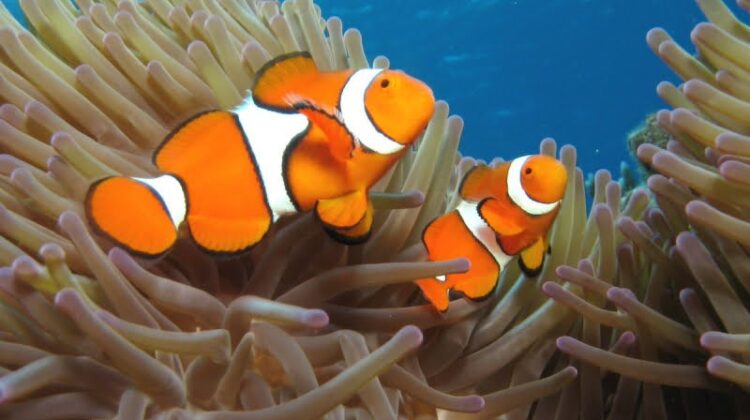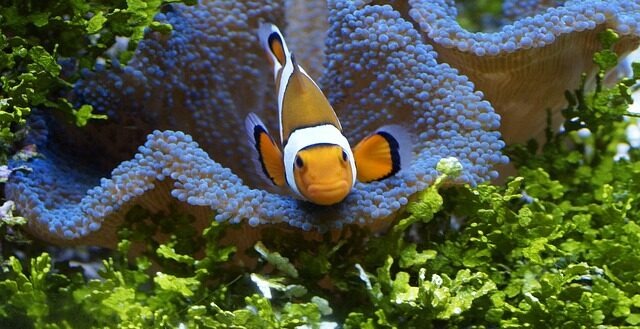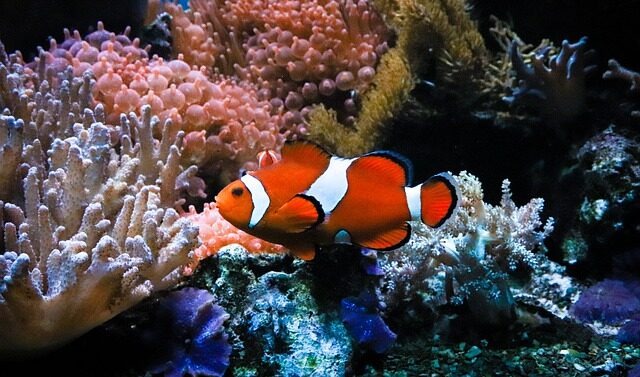
Clownfish, also known as anemonefish, exhibit a fascinating reproductive behavior known as sequential hermaphroditism. This unique characteristic is observed primarily among fish species inhabiting coral reef environments. In the case of clownfish, all individuals are born as males, carrying both male and female reproductive organs.

Initially, clownfish develop into males and form organized schools consisting of multiple males and a single female. The dominant female, the largest fish in the group, holds a prominent position within the hierarchy. The second-ranking member, usually the second-largest male, ensures his dominance over other males by monopolizing the best food resources. Apart from gaining access to more food, he is also the sole breeding partner of the female.
While the male takes on the responsibility of guarding and caring for the eggs, the female acts as a vigilant protector, scanning the surroundings for potential predators, issuing warning calls, and launching attacks due to her larger size.

However, here comes the surprise: male clownfish have the ability to change their sex when the dominant female dies. This fact may not align with the family-friendly portrayal of clownfish in Disney’s “Finding Nemo,” but it is indeed true. The sex change process is irreversible. Once the dominant female passes away, a male clownfish undergoes a transformation, becoming a fully functional female.
This transition occurs gradually over a few weeks and involves significant hormonal changes to complete the transformation into a female. Once the male has transitioned, the second-largest adult male assumes the position of the new dominant mate, and the newly transformed female proceeds to reproduce with him.

If the animated film “Finding Nemo” had accurately depicted the scientific facts, it would have been quite different. Surprisingly, Marlin, the main character, should have been a female, and Nemo, the adorable offspring, should have been Marlin’s mate.
It’s worth noting that other marine species, such as wrasses and moray eels, also exhibit gender-changing abilities. Unlike clownfish, wrasses transition from female to male, with the largest female transforming into a male and assuming control over a group of females.

The ability of male clownfish to change their sex adds another layer of intrigue to their already fascinating reproductive behavior. These underwater wonders continue to captivate scientists and enthusiasts alike, offering valuable insights into the complexities of marine life and its diverse strategies for survival and reproduction.

Leave a Reply